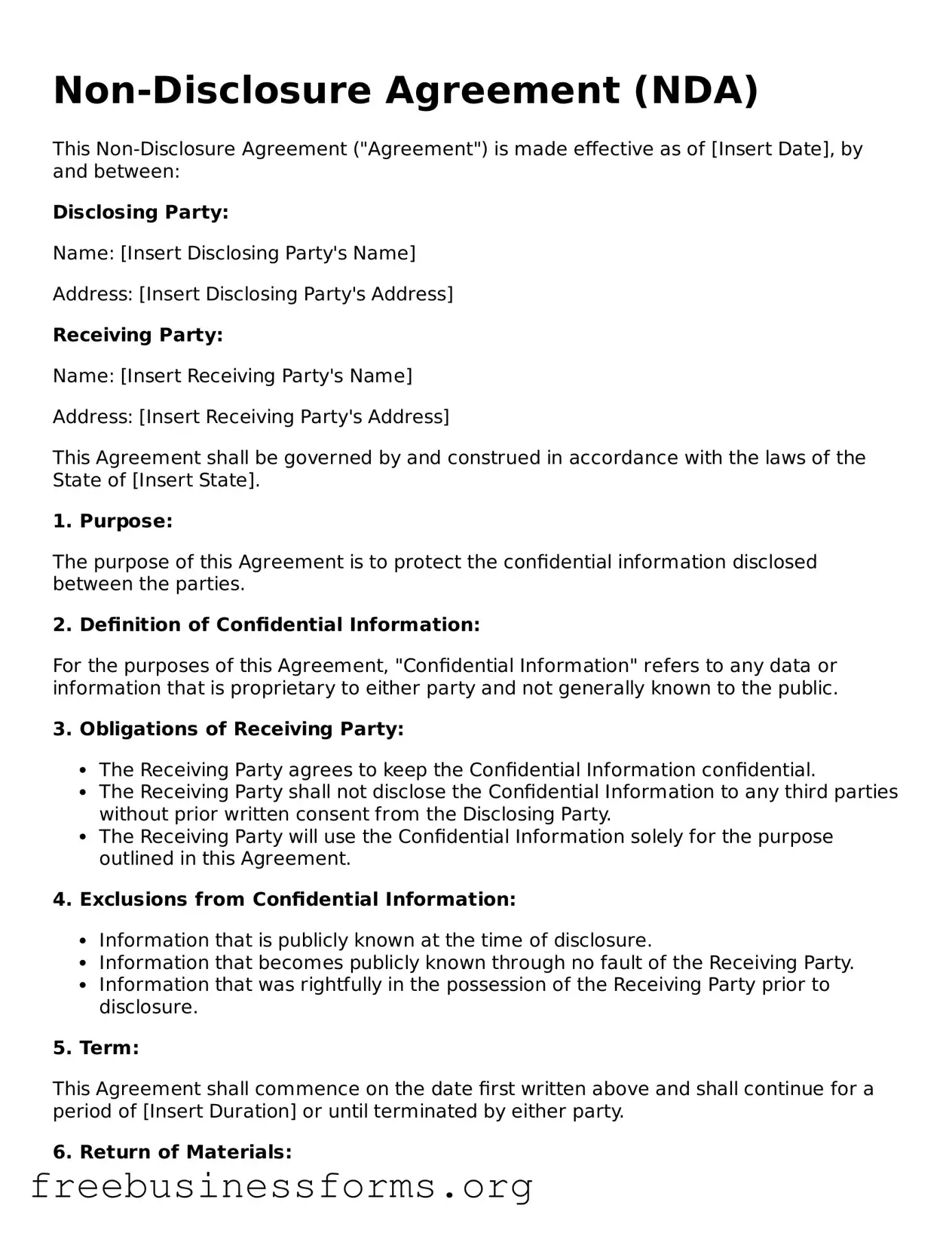Non-Disclosure Agreement (NDA)
This Non-Disclosure Agreement ("Agreement") is made effective as of [Insert Date], by and between:
Disclosing Party:
Name: [Insert Disclosing Party's Name]
Address: [Insert Disclosing Party's Address]
Receiving Party:
Name: [Insert Receiving Party's Name]
Address: [Insert Receiving Party's Address]
This Agreement shall be governed by and construed in accordance with the laws of the State of [Insert State].
1. Purpose:
The purpose of this Agreement is to protect the confidential information disclosed between the parties.
2. Definition of Confidential Information:
For the purposes of this Agreement, "Confidential Information" refers to any data or information that is proprietary to either party and not generally known to the public.
3. Obligations of Receiving Party:
- The Receiving Party agrees to keep the Confidential Information confidential.
- The Receiving Party shall not disclose the Confidential Information to any third parties without prior written consent from the Disclosing Party.
- The Receiving Party will use the Confidential Information solely for the purpose outlined in this Agreement.
4. Exclusions from Confidential Information:
- Information that is publicly known at the time of disclosure.
- Information that becomes publicly known through no fault of the Receiving Party.
- Information that was rightfully in the possession of the Receiving Party prior to disclosure.
5. Term:
This Agreement shall commence on the date first written above and shall continue for a period of [Insert Duration] or until terminated by either party.
6. Return of Materials:
Upon termination of this Agreement, the Receiving Party agrees to return or destroy any materials that contain Confidential Information.
7. Miscellaneous:
- This Agreement constitutes the entire agreement between the parties regarding the subject matter herein.
- Any amendments must be in writing and signed by both parties.
- If any provision of this Agreement is found to be unenforceable, the remaining provisions shall remain in effect.
IN WITNESS WHEREOF, the parties hereto have executed this Non-Disclosure Agreement as of the day and year first above written.
______________________________
Signature of Disclosing Party
______________________________
Signature of Receiving Party
